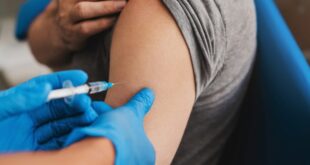Early signs of a problem are not to be ignored. Credit: Quirónsalud Torrevieja
Parkinson’s is a progressive neurodegenerative disease that affects movement. Currently, more than 10 million people in the world are affected by it. In 10% of cases, the condition is caused by the death of dopamine producing neurons in the brain’s “substantia nigra”, resulting in motor symptoms including resting tremors and muscle rigidity. But Parkinson’s is more than a movement disorder—it also brings lesser-known symptoms like depression, sleep disturbances, and even cognitive decline.
We spoke with Dr. Erika Tores, Head of the Neurosciences Unit at Quirónsalud Torrevieja and Quirónsalud AlicanteTo understand better the symptoms of this condition, and to find the most effective treatment options.
Causes and Diagnosis
Experts agree that Parkinson’s is caused by a combination genetic and environmental factors. Most cases of Parkinson’s are idiopathic, or “sporadic.” Certain genetic mutations have been linked to the disease. Exposure to heavy metals and pesticides can be environmental risk factors.
Dr. Torres says that Parkinson’s disease is different from other neurological disorders because it includes both motor symptoms and non-motor ones. This affects the patients’ quality life in a big way. “It is a multifactorial condition involving both genetic predispositions and environmental triggers.”
Diagnosing Parkinson’s Movement disorder specialists find it relatively easy to diagnose. Most diagnosis are clinical and based upon a detailed patient history, as well as a neurological examination. Dr. Torres says that early symptoms are subtle and can often be mistaken for ageing. Parkinson’s usually is diagnosed between 55 and 65 years old, but the early symptoms can appear earlier. Some of these include persistent constipation and sleep disturbances as well as a slight motor asymmetry. These signs can occur several years prior to more visible motor symptoms.
Medication as Treatment
There is no cure for Parkinson’s disease, but there are many treatments that can help maintain a high quality of life. The cornerstone of Parkinson’s management is drug therapy, which includes medications that increase dopamine or restore its levels.
- Levodopa (carbidopa) and LevodopaThe most important and effective treatment is to use levodopa. Levodopa transforms into dopamine inside the brain. Carbidopa, on the other hand, prevents the breakdown of this substance outside the brain.
- Dopamine agonistsPramipexole (ropinirole), rotigotine and other drugs that stimulate dopamine receptors in the brain and increase its effects.
- MAO B inhibitorsThey prevent the breakdown in the brain of dopamine.
- COMT inhibitorsThey prolong the dopamine-producing activity.
- Amantadine: Useful for controlling dyskinesias—uncontrolled movements caused by levodopa.
As the disease advances and motor and non-motor fluctuations are experienced, it is often necessary to adjust and combine medication regimens. During “off” periods—when medication effects wear off—rescue therapies (subcutaneous, sublingual, or inhaled) may be used.
If standard medication does not provide adequate symptom relief due to complications, a second-line therapy tailored to a patient’s age, and with fewer symptoms, may be considered. They include:
- Continuous infusion pumpsSubcutaneous (dopamine-agonists and Levodopa), or intraduodenal (levodopa via PEG gel).
- Deep brain stimulation (DBS).Surgical implant of electrodes to modulate the nervous system
- HIFU (High Intensity Focused ultrasound)Ultrasound therapy that is non-invasive and targets specific brain areas to alleviate symptoms
Dr. Torres says that it is crucial for neurologists, to properly time their therapies. Poor timing can result in premature serious complications or an inadequate response to therapy.
Surgery
In advanced cases, when medications no longer work or cause drastic fluctuations in effectiveness, surgery may be an option. One treatment that is available is Deep Brain StimulationElectrodes can be implanted to control motor symptoms by modulating neural activity using electrical impulses.
Dr. Torres says that DBS can improve quality of living and reduce the need to take medication.
Physiotherapy, Psychological Support and Beyond: Surgery and Medication
Parkinson’s disease treatment does not end with medication or surgery. A comprehensive approach including Psychological support, physiotherapy, occupational therapies, speech therapy and physiotherapy Enhancing the daily lives of patients is just as important.
Dr. Torres explains that physical therapy and regular exercises improve mobility, strength, and balance while occupational therapy helps patients better manage their daily tasks. Speech therapy can also be essential for managing voice and swallowing problems, particularly in the later stages. Speech therapy is also essential to manage voice and swallowing issues, especially in later stages. balanced diet The intake of foods rich in antioxidants, fiber, and protein, when carefully managed, can support the physical well-being.
According to Dr. Torres Support for mental and social wellbeing It is important to note that depression and anxiety can even precede motor symptoms in Parkinson’s. “Psychological treatment improves mood and treatment compliance.” The disease has a profound impact on the social environment, so it is important to support caregivers and their families.
Science is the key to Parkinson’s disease’s future.
Research is progressing rapidly to find treatments for the disease. Not only can you alleviate symptoms, but also alter the course of disease. “We are getting closer to the development of disease-modifying treatments.” “Several clinical trials have advanced and could revolutionize treatment in the next few years,” says Dr. Torres.
The following are promising avenues:
- Gene therapyIntroduce genes to increase the production of dopamine in the brain
- Stem cell therapyImplanting stem cell-derived dopamine producing neurons
- New drugsVaccines that target alpha-synuclein (a toxic protein which accumulates with Parkinson’s) are currently being tested
Quirónsalud: A Benchmark in Parkinson’s Care
Hospital Quirónsalud Torrevieja One of Spain’s most innovative medical centers, offers a roadmap for treating neurological disorders like Parkinson’s. The comprehensive, person-centred treatment combines the latest therapies and equipment along with excellent patient care from a professional team of top-tier professionals.
You can also find out more about us on our website. QuirónsaludYou are in safe hands. Their healthcare model ensures patients receive rapid, personalised, and effective care with all doubts addressed—focused on improving each patient’s quality of life.
Sponsored
 Costa News Spain Breaking News | English News in Spain.
Costa News Spain Breaking News | English News in Spain.





